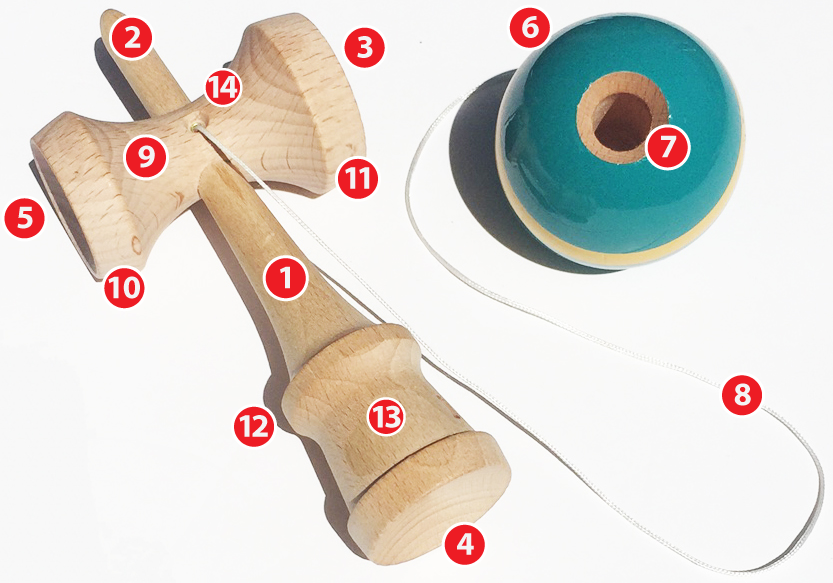All About Kendama
Although references to the kendama have been found as early as 1809, this Japanese toy has recently reinvented itself and is now enjoyed by adults and children alike, both inside Japan and abroad. Here we'll take a look at a few fun facts about the kendama below—and maybe you'll be inspired to try your hand at it yourself!
By FloWhat's a Kendama?
The kendama is a wooden toy that consists of a wooden ball, or dama (玉), and a main body, called the ken for its vaguely sword-like shape—though the kanji can be either "sword" (剣) or "fist" (拳), and very often it's simply written in hiragana (けん) to get けん玉.
The kendama body has three concave cups of slightly different sizes and a single spike. The wooden ball, which has a hole in one side, is attached to the main body with a piece of string. The following is a list of the key parts of a kendama, as seen above:
1. Main body (ken)
2. Spike (kensaki)
3. Large cup (o-zara)
4. Base/mid-sized cup (chu-zara)
5. Small cup (kozara)
6. Ball (tama)
7. Hole (ana)
8. String (ito)
9. Crosspiece (sarado; literally, "dish/cup trunk")
10. Small cup edge (kozara-no-fuchi)
11. Large cup edge (o-zara-no-fuchi)
12. Grip ridge/slip grip (suberi-dome)
13. Base (kenjiri)
Kendama Basics
https://www.youtube.com/watch?v=U1rRb3973aQ
In the video above, performer Matthew Noel takes us through the basics of the Kendama, including key types of grips and some basic tricks. There's a little more to it than you'd think—the key is to use your knees!
Once you've mastered the basics, Kendama USA below has a great set of beginner, intermediate and advanced trick tutorials you can try out!
Kendama Competitions
https://www.youtube.com/watch?v=0mwFJQQLhE4
Kendama also gets competitive, with competitions held in various places around the world. The Kendama World Cup, hosted in Hatsukaichi City in western Hiroshima Prefecture, welcomes competitors from Japan, Australia, the U.S., Canada, Italy, Korea, Romania, Russia and more! Above, 2015 world champion Wyatt Bray discuss what the kendama means to him and the events leading up to winning the championship.
Kendama Professionals
https://www.youtube.com/watch?v=H-IUlkimm6Q
Hiroki "Easy" IIjima is redefining what the kendama means in Japan, fusing kendama tricks with dance. He's part of a performing duo called Zoomadanke, formed in 2010 (his partner, Takeshi Kodama, goes by the handle "Kodaman"), and he's associated with international kendama maker KROM Kendama.
https://www.youtube.com/watch?v=qKey2lIZkWM
The video above features Zoomadanke near the Yokohama Red Brick Warehouse and in various locations throughout Sankei-en Garden, located about 5 kilometers (3 miles) to the south. Watch to the end for an impromptu interview—and an explanation for why they use oversized kendama!




